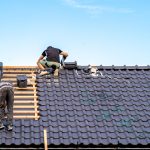Hidden water damage can lead to significant issues within a home, often escalating into more severe problems if not addressed promptly. Undetected leaks can devastate structural integrity and create a breeding ground for mold and mildew. Understanding how leak damage restoration professionals approach the challenge of hidden water damage can provide homeowners valuable insights into maintaining a safe and healthy living environment. We will explore the steps taken by leak damage restoration experts, emphasizing their methods for detecting, assessing, and restoring areas affected by concealed water damage.
Advanced Detection Techniques
The detection phase is one of the most crucial steps in addressing hidden water damage. Restoration professionals employ various advanced detection techniques to locate the source and extent of the damage. Traditional methods often rely on visual inspections, which may not reveal underlying problems. Instead, professionals utilize specialized tools such as moisture meters, thermal imaging cameras, and hygrometers. Moisture meters can pinpoint the moisture level in walls, floors, and ceilings, providing quantifiable data on the severity of the damage. Thermal imaging cameras are instrumental in detecting temperature differences that may indicate moisture presence behind walls or beneath floors. By identifying cold spots, professionals can determine where water may be trapped without visible signs. These advanced techniques help streamline restoration by allowing targeted interventions rather than trial-and-error approaches.
In addition to technological tools, professionals often combine these methods with comprehensive assessments of the building’s layout and construction. They might examine plumbing systems, inspect the roof, and assess the foundation for potential leak sources. Understanding the building’s design is essential, as it can reveal vulnerable areas prone to water intrusion. For example, homes with inadequate drainage systems may be more susceptible to hidden water damage following heavy rains. By employing a multifaceted detection strategy, restoration professionals can effectively identify and address the underlying causes of water damage, paving the way for efficient restoration.
Thorough Assessment of Damage
Once hidden water damage is detected, the next step involves conducting a thorough assessment to determine the extent of the damage. Restoration professionals meticulously inspect the affected areas, documenting the findings to comprehensively overview the situation. This assessment often includes visual inspections, moisture readings, and structural integrity evaluations. Professionals may also check for signs of mold growth or deterioration, as these factors can complicate the restoration process and require additional remediation efforts.
In many cases, hidden water damage can affect multiple layers within a structure, including drywall, insulation, flooring, and even the framing of the building. Understanding the full extent of the damage allows professionals to devise an appropriate restoration plan tailored to the situation’s specific needs. This may involve determining which materials can be salvaged and which need replacement. For instance, drywall that has absorbed water may need to be cut away and replaced to prevent mold growth, while some types of flooring may be salvageable if treated promptly.
Additionally, professionals often consult homeowners during the assessment phase to explain their findings and recommendations. This collaborative approach ensures that homeowners are informed about the condition of their property and the necessary steps for restoration. By fostering open communication, restoration professionals can build trust and help homeowners feel more confident in the restoration process.
Effective Water Removal Strategies
After assessing hidden water damage, the immediate priority is to remove any standing water and mitigate further damage. Restoration professionals deploy effective water removal strategies tailored to the specific situation. Using powerful pumps and extraction equipment, they can quickly remove large quantities of water from affected areas, reducing the risk of further material absorption. For smaller leaks or areas where water has been absorbed, specialized vacuums extract moisture from carpets, upholstery, and other porous materials.
Following the initial removal of standing water, restoration teams focus on drying out affected areas. High-capacity fans, dehumidifiers, and heaters are strategically placed to promote airflow and expedite drying. This phase is crucial in preventing mold growth and further structural damage. Professionals closely monitor humidity and moisture content to ensure materials return to acceptable levels, often utilizing moisture meters to track progress.
In instances of significant water intrusion, damaged materials such as flooring or drywall may need to be removed and replaced. Restoration professionals assess whether affected materials can be dried and salvaged or need to be completely replaced. This decision is based on the level of water damage, the materials’ condition, and the potential for mold growth. By executing effective water removal and drying strategies, restoration professionals play a vital role in minimizing damage and preserving the home’s integrity.
Handling hidden water damage requires a comprehensive and methodical approach to address all aspects of the issue effectively. From advanced detection techniques to thorough assessments, effective water removal, and final restoration, professionals work diligently to restore homes and prevent future issues. Homeowners can benefit significantly from understanding these processes, empowering them to maintain their properties proactively. By working collaboratively with restoration teams and staying informed about the complexities of water damage, individuals can safeguard their homes, ensuring they remain safe and healthy environments for years.







